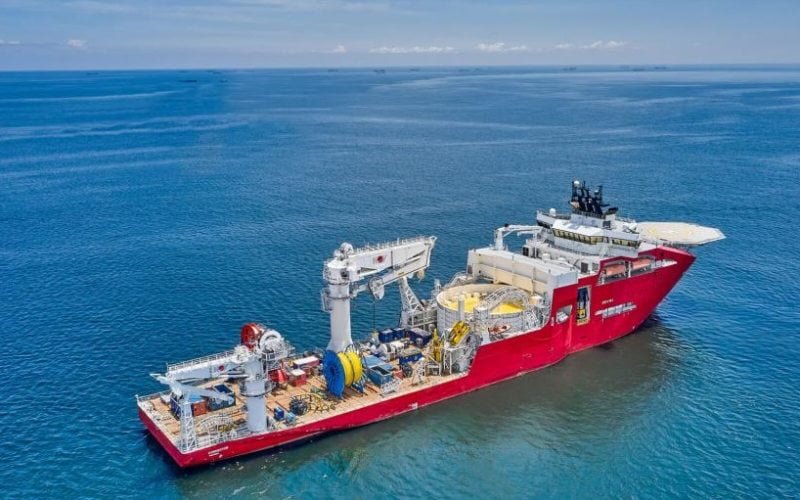Fortescue, a world-leading green technology, energy, and metals company, and Jan De Nul have inked an agreement to collaborate on a groundbreaking project aimed at bridging continents of high energy production with those of high energy consumption. The goal? Delivering green electrons from North Africa to Europe, marking a significant leap in sustainable energy transport.
The agreement, signed in Rabat, Morocco, seals the partnership between Fortescue Chairman, Dr. Andrew Forrest, and Jan De Nul Executive Chairman, Ir. Jan Pieter De Nul. Together, they are set to revolutionize the energy landscape by providing the shipping and sub-sea cable laying capability needed for the transmission of green electrons.
Fortescue founder and Executive Chairman, Dr. Andrew Forrest AO said “There is a massive opportunity to send renewable electrons from Morocco and North Africa to Europe to industries and consumers who deserve a better choice than the only one they currently have available – carbon-emitting, global-warming-causing fossil fuels. Europe, under EU rules, will impose carbon taxes globally through its Carbon Border Adjustment Mechanism on industries that fail to convert energy supplies to renewable energy.”
“Fortescue believes a lack of cable laying capability is creating a bottleneck in connecting Morocco to Europe, making this pursuit with Jan De Nul one of the most outstanding opportunities we have across the world. It will bring substantial benefits to both North Africa and Europe in terms of employment, economic growth, and providing citizens with a choice to use fuels made using green energy.”
Jan De Nul Group, Executive Chairman, IR. Jan Pieter De Nul said “It is clear that the electrification transition is happening worldwide. Direct transport and consumption of green electrons is one of the most efficient ways to help reduce the total energy needs of the world. With our know-how, highly skilled and motivated staff and crew, and our versatile fleet of construction vessels, including five of the world’s cutting-edge subsea cable laying vessels, we are ready to construct the energy transition.”
The collaboration between Fortescue and Jan De Nul is not newfound. With a relationship spanning over two decades, their successful partnership in creating the world’s most efficient port by loading rate in Port Hedland, Western Australia, lays a solid foundation for this ambitious endeavor.
The OCP Fortescue Joint Venture, poised to reshape energy transport dynamics, is subject to customary closing conditions, including regulatory approvals. As the world pivots towards sustainability, this alliance represents a beacon of hope for a greener, more resilient future.
What is Green Electrons?
Green electrons refer to electricity generated from renewable energy sources such as wind, solar, hydro, or geothermal power. The term “green” signifies the environmental friendliness of these energy sources, as they produce minimal or no greenhouse gas emissions during electricity generation, unlike traditional fossil fuels like coal or oil. Therefore, “green electrons” imply electricity that is sustainably produced and contributes to reducing carbon emissions and mitigating climate change.
Source Jan De Nul Group

